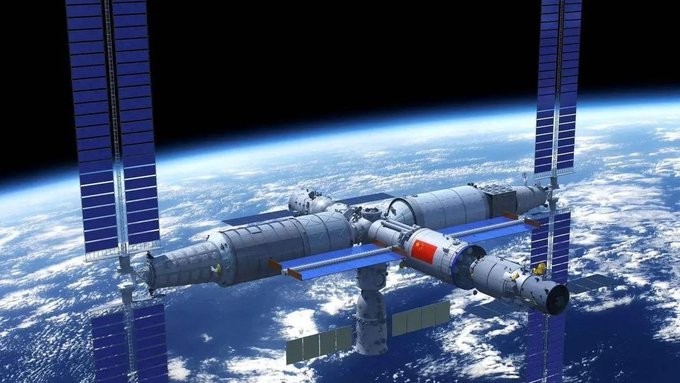views
New Space Bacteria Discovered on China's Tiangong Station: Unraveling Life Beyond Earth

The frontier of space is constantly expanding our knowledge, and a remarkable new discovery from China's Tiangong space station is no exception. Chinese scientists have made headlines with the identification of a brand new species of bacteria thriving right there in orbit. This intriguing microorganism, officially named Niallia tiangongensis, offers exciting insights into how life adapts and survives in the challenging conditions beyond Earth.
A Pioneering Find on Tiangong
The journey of Niallia tiangongensis began with tiny samples collected by taikonauts (Chinese astronauts) from various surfaces inside the Tiangong orbital laboratory. These samples, gathered with great care and sent back to Earth, underwent deep analysis in specialized labs in China. Researchers meticulously studied the genetic makeup of the microbes they found. Their recent publication confirms what they suspected: this is a previously unknown microbial species, distinct from any bacteria we've documented on our home planet.
This landmark discovery is a significant moment for space microbiology and the broader field of astrobiology. It powerfully demonstrates the incredible resilience of microscopic life and its surprising ability to adapt to environments shaped by microgravity, higher radiation levels, and often limited access to typical nutrients.
Adapting to Life in the Cosmos
What makes Niallia tiangongensis so unique? Scientists are particularly fascinated by the special traits that appear to allow it to survive and even thrive in the harsh space environment. While more research is needed, early observations suggest this space-adapted bacterium might possess:
- Stronger Biofilm Formation: Bacteria often create protective layers called biofilms. These 3D structures act like tiny fortresses, shielding them from environmental threats. The new species shows a remarkable ability to form these structures, which would be a huge advantage against the rigors of space.
- Resistance to Stress: Space is filled with harmful elements that can damage cells. Niallia tiangongensis appears to have robust ways to cope with these "stressors," helping it maintain its balance even under pressure.
- Efficient DNA Repair: Exposure to cosmic radiation can cause serious damage to a cell's DNA. This newly found bacterium seems to have highly effective DNA repair mechanisms, which are absolutely crucial for its survival in such a radiative setting.
These adaptations underscore the power of natural selection at play in an isolated, extreme setting like a space station. While scientists are still studying if Niallia tiangongensis could pose any direct health concerns to astronauts (some related bacteria on Earth can cause issues in people with weak immune systems), its survival strategies provide invaluable information for keeping crews healthy and spacecraft in good condition during long-duration space missions.
Looking Ahead: What This Means for Space Travel
The discovery on the Tiangong space station is more than just finding a new life form. It opens up exciting new paths for space research and has major implications for the future of human spaceflight:
- Astronaut Health and Safety: Understanding how bacteria evolve and behave in space is vital for developing better ways to control microbes and ensure the well-being of astronauts on future trips to the Moon and Mars. This includes developing new ways to prevent infections and maintain a clean, healthy cabin environment.
- Protecting Other Worlds: This find highlights the importance of planetary protection guidelines, which aim to prevent Earth's microbes from accidentally contaminating other celestial bodies and vice versa. It encourages us to think more deeply about whether this bacterium was an Earth microbe that changed in space, or if it developed its unique traits purely in orbit.
- New Technologies on Earth: The stress-resistant genes and unique survival methods of Niallia tiangongensiscould have surprising applications back on our planet. Imagine developing new materials that are more resistant to radiation, more effective ways to preserve food, or even novel medical treatments inspired by these hardy space microbes.
- Deeper Astrobiology Insights: The existence of such a resilient organism in Earth's orbit deepens our understanding of how adaptable microbial life truly is, and it sparks further thought about the potential for life in extreme conditions, even beyond our planet. It brings us a step closer to answering fundamental questions about life in the universe.
As China's space program continues its ambitious goals, including future crewed missions and deeper space exploration, the ongoing study of these tiny orbital inhabitants on the Tiangong station will remain a crucial area of focus. The story of Niallia tiangongensis is a powerful reminder that even in the seemingly empty vacuum of space, life finds a way, constantly evolving and challenging our ideas about what's possible. This scientific breakthrough from the China Manned Space Agency truly shows the vital role that orbital laboratories play in pushing the boundaries of human knowledge.




















Comments
0 comment